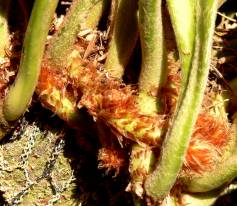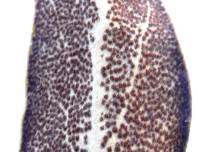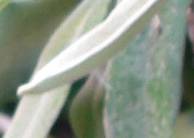Pyrrosia
Pyrrosia Mirb.
Family: Polypodiaceae
Common names: felt ferns
Introduction
Pyrrosia is a genus of mostly epiphytic and simple-leaved ferns.

Description
Description
Pyrrosia is a fern genus belonging to the family Polypodiaceae, which, together with its sister genus Platycerium, better known as the staghorn fern, is often placed in the subfamily Platycerioideae.

The most striking feature supporting the affinity between Pyrrosia with its simple fronds, and Platycerium which has strongly dimorphic fronds (dissimilar fronds on the same plant), is the stellate (star-shaped) hairs occurring on the fronds.
Distribution and habitat
Distribution description
Pyrrosia, a genus of 51 species, is confined to the palaeotropics, occurring from Mt Nimba in Liberia to Henderson Island in the Pacific. In this area, most species occur in SE Asia, several being narrow endemics. Platycerium on the other hand, has a circum-tropic distribution. Four Pyrrosia species, one with two varieties, occur in sub-Saharan Africa. Pyrrosia in Africa occurs from West Africa to Ethiopia, southwards through central tropical Africa to East London in South Africa. Within this area, the species is restricted to the tropical and subtropical regions.
Derivation of name and historical aspects
History
Pyrrosia is derived from the Greek word pyrros meaning red, and refers to the reddish tint of the stellate hairs of some Pyrrosia species.
Growing Pyrrosia
Grow
Pyrrosia species are best cultivated in felt-layered, wire hanging baskets, as the creeping rhizome will ultimately grow over the edge of the container and will require a substrate for the roots to attach. The medium should be loose and humus-rich, yet it should be able to retain moisture over a prolonged period. Propagation of Pyrrosia species is best done by rhizome division. The rhizome sections should be planted shallowly with the rhizome apex always exposed. The plants may take a while to become established but once this has been achieved they are tough and, apart from regular watering and occasional feeding with any liquid fertiliser, require little attention. Growing the plants in light shade is recommended. The plants will require protection from frost in the colder parts of South Africa.
Only two Pyrrosia species occur in South Africa:
Species

Pyrrosia africana is restricted to the eastern coastal regions of South Africa, extending northwards to southern Mozambique. The specific epithet is therefore somewhat misleading as it suggests the species occurs widely in Africa. Although the species mostly occurs as a low to medium high epiphyte in seasonally moist evergreen coastal forests, it often extends to the KwaZulu-Natal midlands, occurring at an elevation of approximately 700 m. The species also grows on rocks in forests. Pyrrosia africana has a rhizome up to 4 mm in diameter with fronds arranged dorsally on it. The short phyllopodia to which the fronds are attached, are up to 25 mm apart. The rhizome grows on the surface of the growing medium and is initially closely set with reddish brown scales, but soon becomes bare.

The small round sori, up to 2 mm in diameter, occur closely on the upper half of the fronds.


Pyrrosia schimperiana var. schimperiana is widely distributed in the tropical parts of Africa, occurring from West Africa to Ethiopia and southwards to Angola and Zimbabwe. The species has a restricted distribution in South Africa and is confined to the Blyde River Canyon and Mariepskop in Mpumalanga. Although the species also occurs as a low-level epiphyte, it often occurs in rock crevices on exposed and shaded cliffs, but never in deep shade. This species is named after the Strasbourg Professor of Botany, W.P. Schimper (1804-1878), who collected plants in various parts of Africa, particularly Ethiopia.
The rhizome of P. schimperiana grows up to 2 mm in diameter and is also not as widely creeping as that of the former species. The fronds are borne up to 10 mm apart and are firmly herbaceous, but not as leathery as that of the former species.
Both frond surfaces of this species remain densely covered by stellate hairs, giving the plant a greyish colour. The fronds grow up to 180 x 25 mm. The fronds of both species are poikilohydrous (frond turgidity varies in accordance with the available habitat moisture: fronds will roll up when dry and unfold when moisture levels increase).

Credits
J P Roux
Compton Herbarium
May 2005
Plant Attributes:
Plant Type: Fern
SA Distribution:
Soil type:
Flowering season:
PH:
Flower colour:
Aspect:
Gardening skill:
Special Features:
Horticultural zones






Rate this article
Article well written and informative
Rate this plant
Is this an interesting plant?
Login to add your Comment
Back to topNot registered yet? Click here to register.